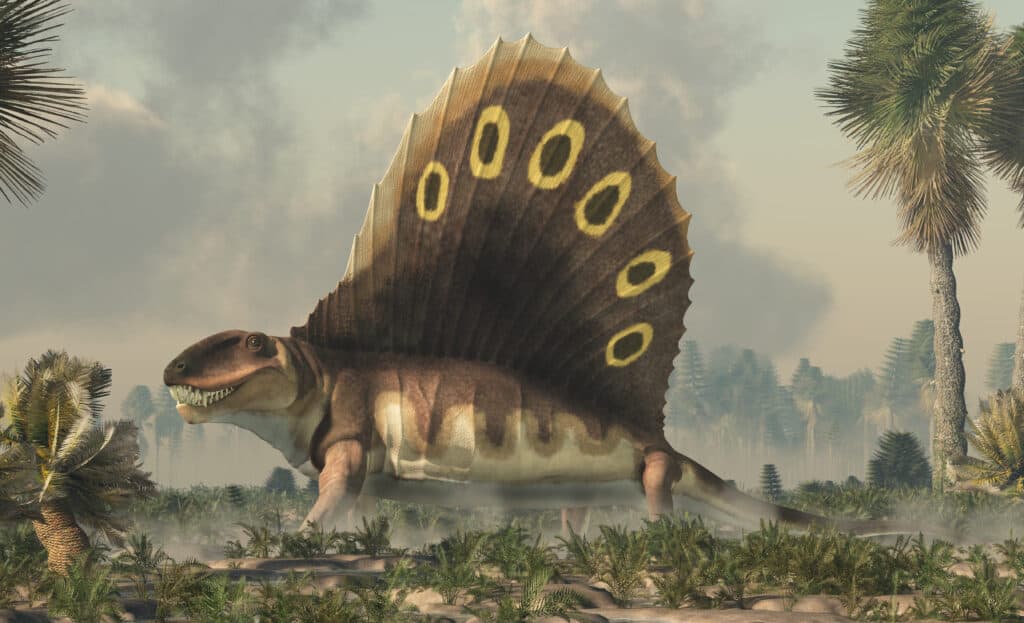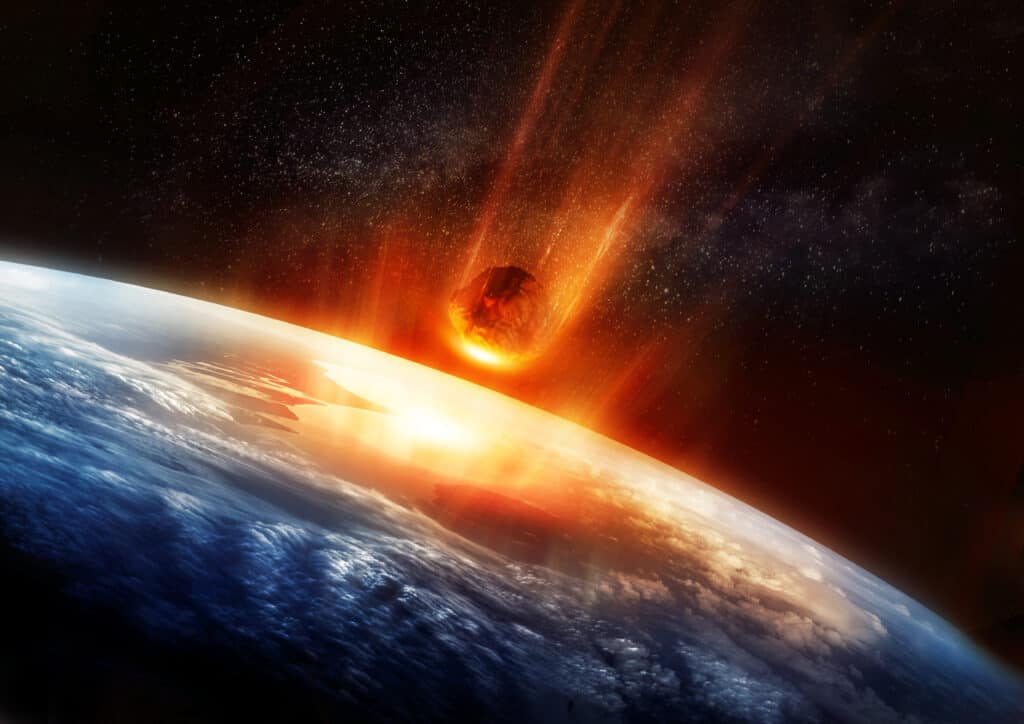Prehistoric amphibians existed in several geologic periods and evolved over time. With a diverse range of shapes and sizes, amphibians thrived well in their environment. The most ancient amphibians were the Ichthyostegelia. Ichthyostegelia existed about 363 million years ago, in the late Devonian period, and were likened to the modern-day salamanders.
Sooner, these premier amphibians were replaced in the Carboniferous period by the more aquatic Lepyspondyii. These amphibians had sickle-shaped heads that made them more inclined toward living in the water. And gradually, these ancient creatures evolved from the Devonian period to the Carboniferous period to the Permian period.
The Permian period witnessed an expansion of the terrestrial fauna and, at the same time, a proliferating number of amphibians. The ancient animals existed until the early Triassic period. Among these ancient animals were Eryops, an egg-Laying and predatory amphibian that existed during the Permian period.

The Eryops is an ancient amphibian that existed during the Permian period.
©Catmando/Shutterstock.com
Description and Size
“Eryops” is a Greek word for “drawn-out face.” This is because a large portion of the animal’s skull was in front of its eyes. Eryops belong to an extinct genus called amphibious temnospondyls. Among the species in this genus is the Eryops megacephalus, which existed in the early Permian period.
In terms of body length, Eryops was about 1.5 -2.0 meters (4.9- 6.6ft) long. The exceptional ones among them could grow as long as 3m (9.8ft). Adult Eryops weighed about 440lb ( 200 kilograms). With that kind of body size, Eryops was undoubtedly the largest animal during that period.
Eryops possessed a proportionately large skull with a length of about 2 feet coupled with its broad and flat surfaces. For better visualization, Eryops’ skull can be likened to modern-day Alligators. The skull of Eryops carried a wide mouth that housed several curved teeth similar to those found in frogs.
Eryops had a more massive and sturdy body than most animals in the Permian period. Their skeletal structure included large, solid, and heavily ossified bones. Their forelimbs were highly efficient and had several muscle attachments. Interestingly, the shoulder girdle of Eryops wasn’t attached to their skull. This conferred them with a wide range of mobility.
The hindlimbs of these ancient amphibians were also massive and had several muscles. Their hindlimbs projected dorsally to form a connection with their backbones. The hindlimbs of Eryops had a structure that supported their weight efficiently and conferred them active propulsion. Their three sacral bones (ilium, ischium, and pubis) are articulated at a single point, the acetabulum, and also articulated with the femur.
What did Eryops Eat?
Eryops was a voracious, carnivorous predator. The animal fed on both aquatic and terrestrial prey. The animal must have hunted and fed on fishes, smaller amphibians, and smaller reptiles that existed during the Permian period.
Eryops were able to efficiently maximize their diet because of their labyrinthodont dentition. Their labyrinthodont dentition implied they were maze toothed and had teeth with folded enamel. The teeth of these ancient predatory amphibians could adapt to stress due to their shape and cross-section. The roof of their mouth is anchored by three pairs of reverse fangs protected by several bony projections.
Scientists believe that these fangs were used to catch slimy elusive prey during swallowing. Their jaws also had a wide gape. These adaptive features indicate that Eryops practiced an inertial mode of feeding. An inertial feeding mode is one where a creature encircles the prey with its mouth and thrusts forward to push prey further into its mouth forcefully.
When and Where Did Eryops Live?
Eryops are primitive amphibians that existed during the Permian period. This was about 270 million years ago, long before the inception of dinosaurs.
Eryops lived mainly in North America as swamp dwellers. Like other amphibians, Eryops presided near water bodies since they had to lay their shell-less eggs in water to prevent desiccation or drying out. Eryops inhabited lowland areas around ponds, streams, and rivers. This facilitated their feeding on small aquatic animals.
Threat And Predators Of Eryops
The major threats that challenged Eryops were natural disasters during the Permian period. Periods of drought during the Permian period could have caused water bodies and their surroundings to dry up. This implies that Eryops would have faced the problem of preserving their eggs and young ones.
As a result, Eryops had to compete with other fierce carnivores for food on land. Even though Eryops were among the most direful predators of the Permian period, they still had their predators. Larger and faster-moving land animals like dimetrodon existed during the Permian period and would have preyed on Eryops.
Also, giant aquatic animals like the primitive Orthacanthus shark must have attacked Eryops they came across in the water.

The Dimetrodon was a fast-moving land animal that likely preyed on the Eryops.
©Daniel Eskridge/Shutterstock.com
Where Were Eryops Fossils Found?
Fossils of Eryops megacephalus have been recovered from rocks in the Texas Red Beds Formation, United States of America. Radiocarbon dating showed that these fossils belonged to animals that existed about 295 million years ago.
In the 1950s, older fossils that belonged to another species of Eryops called Eryops avinoffi were also discovered at the exact location. Initially, scientists classified it under the genus Glaukerpeton. However, further research showed the fossils had several similarities with Eryops, so it was brought under the genus temnospondyls.
Skulls belonging to Eryops were discovered in the Upper Pennsylvanian epoch rocks of the El Cobre Canyon Formation in New Mexico in 2005.
How Did Eryops Reproduce?
The mode of reproduction of amphibians seems to be the only thing that hasn’t evolved about this group of animals. Like the modern amphibians, Eryops copulated in water and laid their soft, shell-less eggs in this water or other damp regions that provided a cool environment for the eggs.
This buttresses that external fertilization has been amphibians’ mode of reproduction right from their inception. In external fertilization, the female deposits a cluster or string of eggs into the water or damp environment. The male releases his sperm onto the eggs to fertilize them almost immediately. These fertilized eggs would later attach to plants for support.
In Texas, fossils of Eryops eggs have been discovered. These fossils lacked shells and had some appreciable parts, such as the mucous coating and vitelline membrane. Scientists have devised several speculations to prove that Eryops might have mated on land and even carried out internal fertilization. These speculations were based on research made on some fossils found in Pennsylvania.
Nevertheless, the larvae and juvenile remains of the discovered specimens have bolstered the fact that their metamorphosis was a consistent process and the animals had to pass through several physical stages before attaining maturity. As expected, the larval stage of Eryops had poorly formed skeletons with gills that regressed as they attained maturity.
The juvenile Eryops possessed skulls that developed in spaced pits and broad ridges. Their limbs and ribs were also poorly developed but became gradually stronger due to ossification. Later these juvenile amphibians grow into adult Eryops with a fully developed body.
How did Eryops Become Extinct?
Eryops were wiped out during the most catastrophic extinction in the Earth’s history. This is the Permian extinction that happened about 252 million years ago. The Permian Extinction marked the end of the Permian period. Its extinction was a massive disaster that wiped out over 70% of life on land and about 95% of aquatic dwellers. The Permian extinction happened long before dinosaurs emerged on earth.
The cause of the Permian Extinction has been a topic of debate among scientists for a long time. Most scientists came to the notion that it resulted from Volcanic activities or a change in the ocean’s salinity. During their research, a team of scientists went to Graphite Peak in Antarctica to observe the strata layer between the Permian and Triassic periods.
They were amazed to find minute metallic particles within the transitional layers. Chemical analysis of these particles revealed that they were meteorite particles. This fortified the claim that Great Permian Extinction resulted from a meteorite colliding with the Earth.
Meteorite collision causes the biosphere to transform into something intolerable for life radically. This must have wiped out the life on earth at that time, including Eryops.

The Eryops died out in the Permian Extinction, which scientists believe may have been caused by a meteor colliding with Earth.
©solarseven/Shutterstock.com
Other Animals Similar To Eryops
Salamander
Salamanders are a group of amphibians that possess a similar physical appearance to lizards. Salamanders have a slender body with curved snouts and limbs that are oriented at right angles to their body.
Alligators
Alligators are giant predatory reptiles that spend most of their time in shallow waters. An average adult American alligator can be as long as 4m(13ft) and weigh about 360kg (790lb).
Brachiosaurus
Brachiosaurus was among the smallest prehistoric amphibians, with a length of about six inches.
Up Next: Ancient animals have been a source of fascination for humans for several years. There is no limit to what you can learn about evolution regarding prehistoric animals. Here are some articles about prehistoric events and animals you can check out on this site
The photo featured at the top of this post is © Warpaint/Shutterstock.com
FAQs (Frequently Asked Questions)
When Were Eryops Alive?
Eryops are prehistoric amphibian animals that existed during the Permian period, about 299 million to 251 million years ago
How Big Were Eryops?
Eryops were massive amphibians. They could grow as long as 9 feet and weighed about 440lb (about 200 kilograms)
Thank you for reading! Have some feedback for us? Contact the AZ Animals editorial team.






